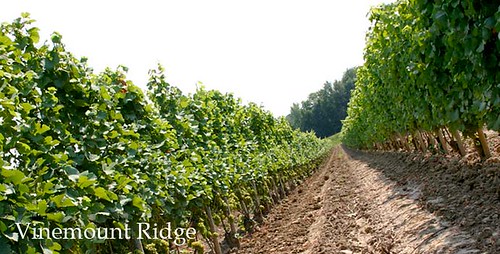
It might not be as famous as its glamorous neighbours, but the wines being made from grapes grown in the Vinemount Ridge sub-appellation in Niagara have clearly defined themselves as something special.
Bordering the Beamsville, Twenty Mile and Short Hills Benches, the Vinemount Moraine dominates the topography in the northern and western portions of Vinemount Ridge. It is a long, narrow, hummocky ridge, less than a kilometre-wide and reaching an elevation of just over 200 metres on its western side and then descends gradually in long rolling slopes southward before grading onto the gentle relief of the Haldimand Clay Plain.
The vineyards on the moraine’s gentle south-facing slopes are well oriented to receive maximum sunlight throughout the growing season and well into the fall.
The soils in Vinemount Ridge have developed on a rich layer of clay loam till and are composed of a large amount of silt and shale derived from the Niagara Escarpment. These soils have high water-holding capacities due to their considerable thickness and silty, clay loam texture. Vines enjoy a consistent and reliable water supply throughout the summer but are able to avoid soggy roots with the natural drainage of the underlying Vinemount Moraine.
While some Pinot Noir is grown in Vinemount Ridge, it is the Riesling that is regarded as a strong performer, the best examples displaying sweet citrus fruit and wet stone mineral characters that develop as the wine ages.
Two excellent virtual wineries, Charles Baker and 2027 Cellars, both source fruit for their top Rieslings from Vinemount Ridge — Baker from Picone Vineyard and Kevin Panagapka’s 2027 Cellars from Calamus, which is labelled as Falls Vineyard (which is really Ball’s Falls).
Tawse also makes a Vinemount Ridge Riesling from its Quarry Road vineyard situated in the sub-appellation.
 And, of course, Calamus Winery, which is physically built right in the appellation, makes a fabulous Riesling that shares many of the same defining traits as the Rieslings above — lovely citrus-grapefruit, firm acidic backbone and a mineral component that develops with age, adding a lovely sweet petrol note that comes with time.
And, of course, Calamus Winery, which is physically built right in the appellation, makes a fabulous Riesling that shares many of the same defining traits as the Rieslings above — lovely citrus-grapefruit, firm acidic backbone and a mineral component that develops with age, adding a lovely sweet petrol note that comes with time.
The owner of Calamus, Derek Saunders, doesn’t have all the answers as to why the sub-appellation is such a sweet spot for Riesling but suggests that the top layer of clay forces the vines to dig deep into the mineral-rich layer of limestone for nourishment.
I opened a 2008 Calamus Vinemount Ridge Riesling recently, and it was indeed a perfect example of terroir-driven fruit. It was all lime, citrus and quince on one side and beautiful slate and river rock minerality on the other. It was propped up by racy acidity, giving it a firm feel in the mouth and suggesting many more years of life and evolution.
I tasted through a few of the Calamus Estate Winery’s new releases, including the newest version of the Riesling. Here’s what I liked:
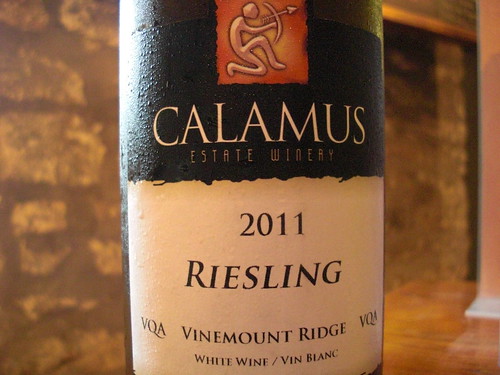
Calamus Riesling Vinemount Ridge 2011 ($16, winery now, Vintages Aug. 18, 90 points) — It opens with gushing grapefuit and lime aromas with softer notes of peach and river rock and a subtle note of earthiness. It’s bursts on the palate with a wave of citrus fruit, racy acidity, quince and minerals. It’s a very focused wine that will develop and mature, bringing petrol and minerals in balance with the fruit.
Calamus Pinot Gris 2011 ($17, winery, 88 points) — Saunders is big on Niagara Gris, especially the Gris grown on Vinemount Ridge. This has a lovely nose of pear, apple, melon and exotic tropical fruits. It’s juicy on the palate with mango and apple flavours and a touch of clove spice through the long finish. Made in a completely dry style.
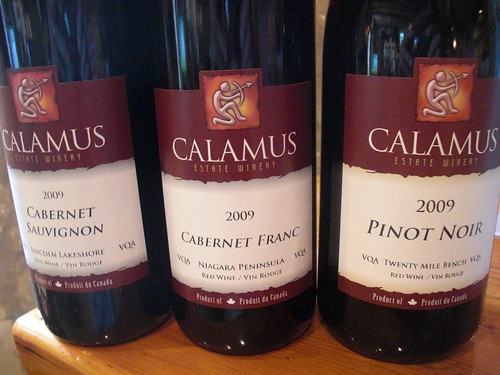
Calamus Pinot Noir 2009 ($22, winery, 88 points) — A Pinot to buy, hold and watch as it matures. The nose shows bramble, charred cedar, cherry, raspberry, beetroot and cranberry. It’s an earthy, red-fruit laden wine in the mouth with good vibrancy and evident tannins. Needs to all come together.
Calamus Cabernet Franc 2009 ($19, winery, 89 points) — A nose of black raspberry, cherry-kirsch and gorgeous, classic Niagara, integrated herbs and spices. It’s delicious on the palate with bright red fruits, verve and notes of herbs, cedar and bramble that bring complexity to the wine and keep it interesting.
Calamus Cabernet Sauvignon 2009 ($20, Vintages Aug. 18, 88 points) — Good aromatics of blackberry and cherry fruit with a touch of cassis, oak and spice. It’s juicy in the mouth with supporting tannins, oak, spice and a persistence that lasts through the finish.
•••
And a couple of other wines to try from Niagara. The Vincor-owned (or Constellation Brands, as it is now called) Vintage Ink label is sold exclusively through Vintages.
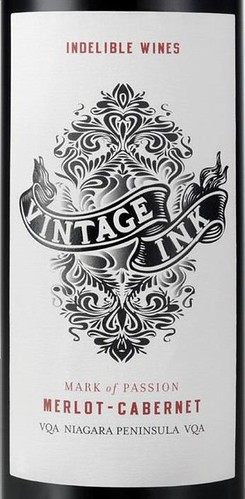 Vintage Ink Rite of Passage Chardonnay 2011 ($17, Vintages Fall release, 87 points) — Half of the fruit for this wine comes from the Delaine Vineyard, a sensational vineyard in the Niagara River appellation. The rest is sourced from Four Mile Creek. The wines sees eight months of oak aging. The nose displays mango, peach, pear and vanilla cream aromas. It is rich and ripe on the palate with creamy-spicy notes to go with tropical fruits, poached pear and a squirt of balancing citrus through the finish.
Vintage Ink Rite of Passage Chardonnay 2011 ($17, Vintages Fall release, 87 points) — Half of the fruit for this wine comes from the Delaine Vineyard, a sensational vineyard in the Niagara River appellation. The rest is sourced from Four Mile Creek. The wines sees eight months of oak aging. The nose displays mango, peach, pear and vanilla cream aromas. It is rich and ripe on the palate with creamy-spicy notes to go with tropical fruits, poached pear and a squirt of balancing citrus through the finish.
Vintage Ink Mark of Passion Merlot-Cabernet 2010 ($18, Vintages Sept. 12, 88 points) — The fruit (Merlot, Cab Franc and Cab Sauv) was sourced from vineyards both on the Beamsville Bench in the lowlands of Niagara-on-the-Lake. The wine was aged for 16 months in oak. It has a powerful nose of cassis, blackcurrants, black cherry, roasted herbs and spice. It’s round on the palate and explodes with ripe black fruits and expressive spices. Very smooth delivery.


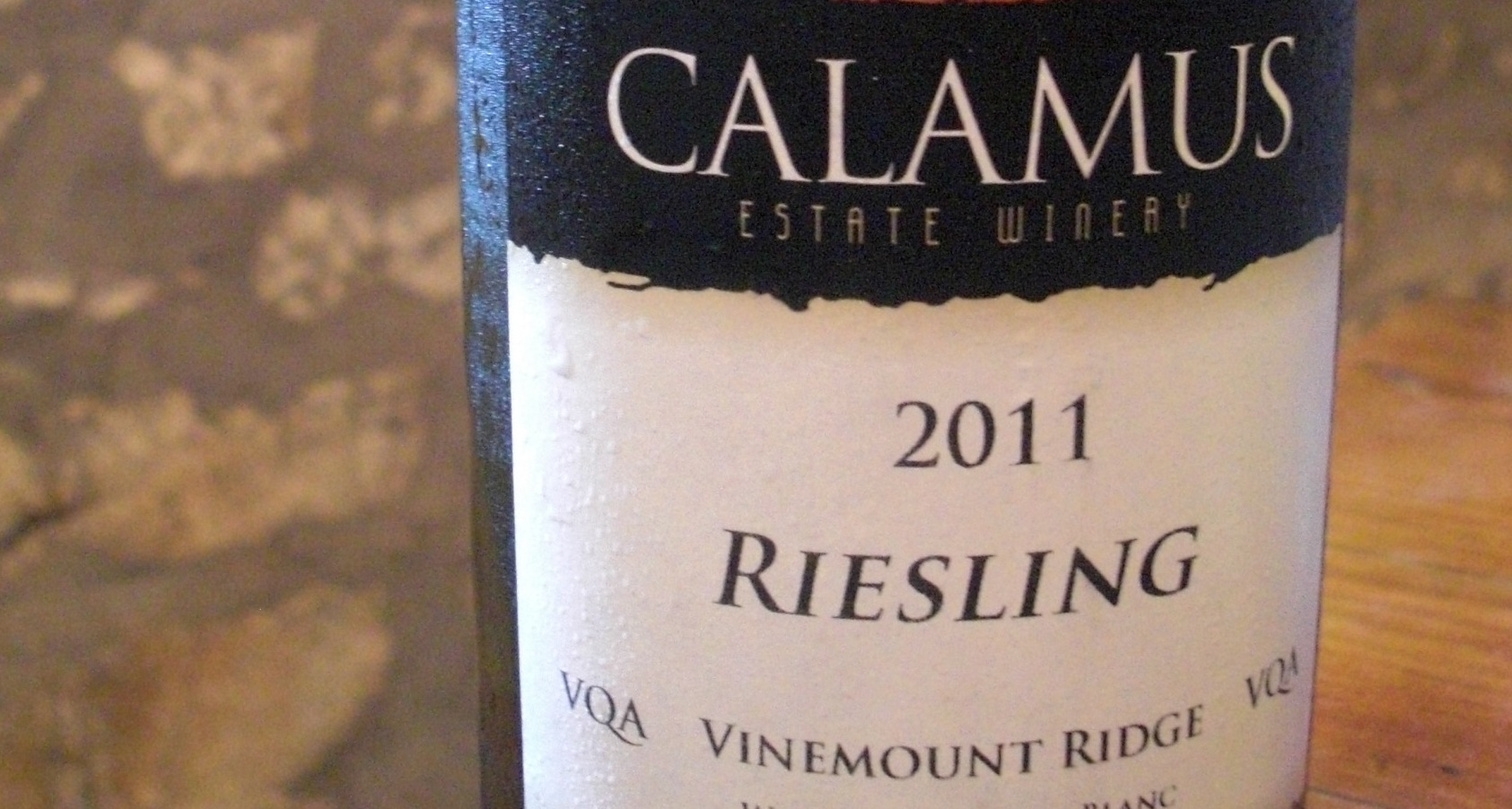




Comment here